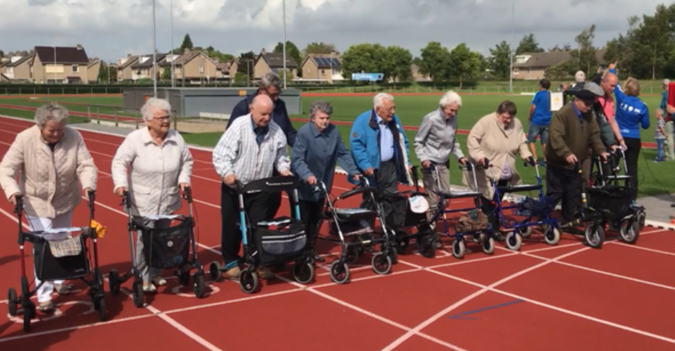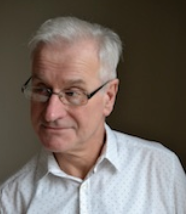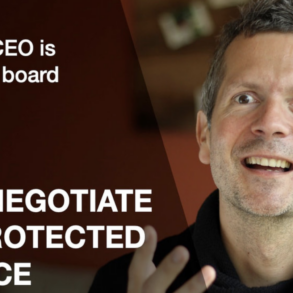Interview with Brendan Martin by Anna Betz for Enlivening Edge Magazine
Part 1 of this 3-part article is here. Part 3 of this 3-part article is here.
Access to the budget is key for self-organising teams
We are drawing on the very rich experience of the Netherlands and the emerging experience in the UK and Ireland to help organizations design solutions and navigate their way through required transitions.
Buurtzorg in the Netherlands has helped other organizations in the NL to change, who wanted to work like them. We all draw on the expertise of Buurtzorg which is:
- To provide great care
- To recruit and retain staff who are happy at work
- To use resources in more productive ways
The National Health Service environment which is part of the UK state apparatus is quite different from in the NL where healthcare organizations operate more independently from each other within a wider system, although both operate within a regulatory environment. Buurtzorg operates within an insurance-based system which provides for independent decision-making much more easily than in NHS.
We are learning more and more about the difference between Buurtzorg practices and the practices that are appropriate in the NHS that can replicate the Buurtzorg approach.
One of the most frequent issues we encounter is that teams are frustrated that their ability to work autonomously within their organization–even when they have been allowed to operate autonomously–is constrained by not having access to the budget they need in order to carry out their work. Whatever they decide they need to do to fulfill their mission, they are constrained due to not having control of their own budget.
To what extent should NHS organizations delegate budgetary authority to teams?
This is a key issue in the NHS. Once we get the conversation going around budgetary control and ask this crucial question: ‘In what way and to what extent can budgetary authority be delegated to teams?’ that will automatically refresh another question we are asking:
‘How do you design a framework within the NHS organization which allows the self–organized teams to be self-organized and operate autonomously but operate within parameters that give clarity to them about what is expected of them about the way they operate and the responsibility with which they exercise resource use and the outcomes that are expected of them? ‘


Many people looking at Buurtzorg from the outside might think it is simply an organization that has self-organized teams. That is not the case. Those teams operate within an understood framework of very simple understandings (not rules) about what needs to happen in the organization.
For example, an understanding about not having a team that grows larger than 12 as it becomes impossible to work effectively beyond this size.
Another example is the understanding that 61% of the time is to be spent in client-facing situations which are billable. In an insurance-based system, if Buurtzorg teams are able to ensure that on average 61% of their time is billable, then their organization as a whole will be sustainable. This means 39% is spent in situations that are not directly billable to insurers but are necessary other aspects of the teams’ work like holiday and sick leave time, meetings, as well as collective and individual reflection.
Creating neighbourhoods of care
Buurtzorg means ‘neighbourhood care’ and thus outreach into community. The care is provided through teams for clients but also to create neighbourhoods of care which mobilise community assets like freely-given effort and commitment. Creating more-caring neighbourhoods is part of the work of professionals in Buurtzorg.

One example of such outreach work was the popular race with walking frames.
The Rollator race in Amsterdam in 2014

Buurtzorg staff use solution-driven methods of interaction as part of the work and prefer to look to the possible future rather than to the past.
Motivation that sustains change
How do you assess the readiness of an organisation to host a Buurtzorg team and what do you do to support their readiness?
 We still have dilemmas about how to do this effectively. We first go back to the essentials of the Buurtzorg model and share those basic values with people we are working with:
We still have dilemmas about how to do this effectively. We first go back to the essentials of the Buurtzorg model and share those basic values with people we are working with:
- Person-centred care
- Creating the environment for relationships
- Creating trust-based relationships within the organisation providing care
It is important that they have a broad understanding of what it means to support and grow change that enables professional care givers to work effectively in a person-centred way with the people they are supporting. They also have to be ready to radically overhaul their own organization to better create an enabling supporting environment for that.
The real dilemma comes in when you judge to what degree this can be understood in the abstract at the beginning of a process of change. And to what degree this needs to be learned through the practical participation in change processes.
In some cases we have judged that the motivations of the organizations that approached us are not the right motivations to be able to sustain change, to be able to create the right environment to enable the right values to flourish.

 What would be an example of a wrong motivation?
What would be an example of a wrong motivation?
There is a very strong evidence base that the Buurtzorg way of working saves money. It does that in two main ways.
First, by reducing the number of hours of professional input required–because of the support of self-management of care by clients and by mobilising clients’ own resources and resources around them to meet their needs. Typical relationship between B. worker and people needing support is a high level of engagement, from a big investment in time at beginning of relationship.
But the quantity of time for professional input required tapers off over time. The best evaluation suggests that Buurtzorg reduced the number of hours that professionals provided care per client by 30-40% as a result of working this way, over the lifetime of the client engagement. Initially it is much higher but over months and years it is much less.
Second, self-organized teams with a small but very effective back office with 20 regional coaches, Buurtzorg has 14.000 staff with a back office of only 50 staff, so overheads are very low.
Some organisations that approach us simply want to save money as a primary purpose. Thinking this way, they not only will not achieve their primary purpose but won’t achieve the other benefits either.
 Brendan Martin is founder and Managing Director of Public World and Buurtzorg Britain & Ireland, which work to support better care and services and more fun at work through self-managed teams in high trust organisations. www.buurtzorg.org.uk
Brendan Martin is founder and Managing Director of Public World and Buurtzorg Britain & Ireland, which work to support better care and services and more fun at work through self-managed teams in high trust organisations. www.buurtzorg.org.uk
 Anna’s background is in Health and Social Care with training in Herbal Medicine, Socialwork, Mindfulness Practice, Transparent Communication, and Systemic Family Therapy. She practices a pro-active evolutionary approach to Health and Wellbeing and leads on projects in the UK National Health Service using Mindfulness and diet for people suffering from chronic inflammatory diseases like diabetes and dementia. Her passion for building thriving and sustainable communities inspired her to co-found the HealthCommonsHub. She feels at home in places where individual, communal, organisational, and social evolution meet, and where people support each other in becoming whole and feel enlivened.
Anna’s background is in Health and Social Care with training in Herbal Medicine, Socialwork, Mindfulness Practice, Transparent Communication, and Systemic Family Therapy. She practices a pro-active evolutionary approach to Health and Wellbeing and leads on projects in the UK National Health Service using Mindfulness and diet for people suffering from chronic inflammatory diseases like diabetes and dementia. Her passion for building thriving and sustainable communities inspired her to co-found the HealthCommonsHub. She feels at home in places where individual, communal, organisational, and social evolution meet, and where people support each other in becoming whole and feel enlivened.




